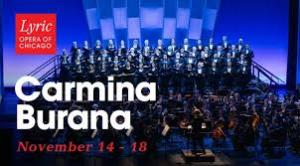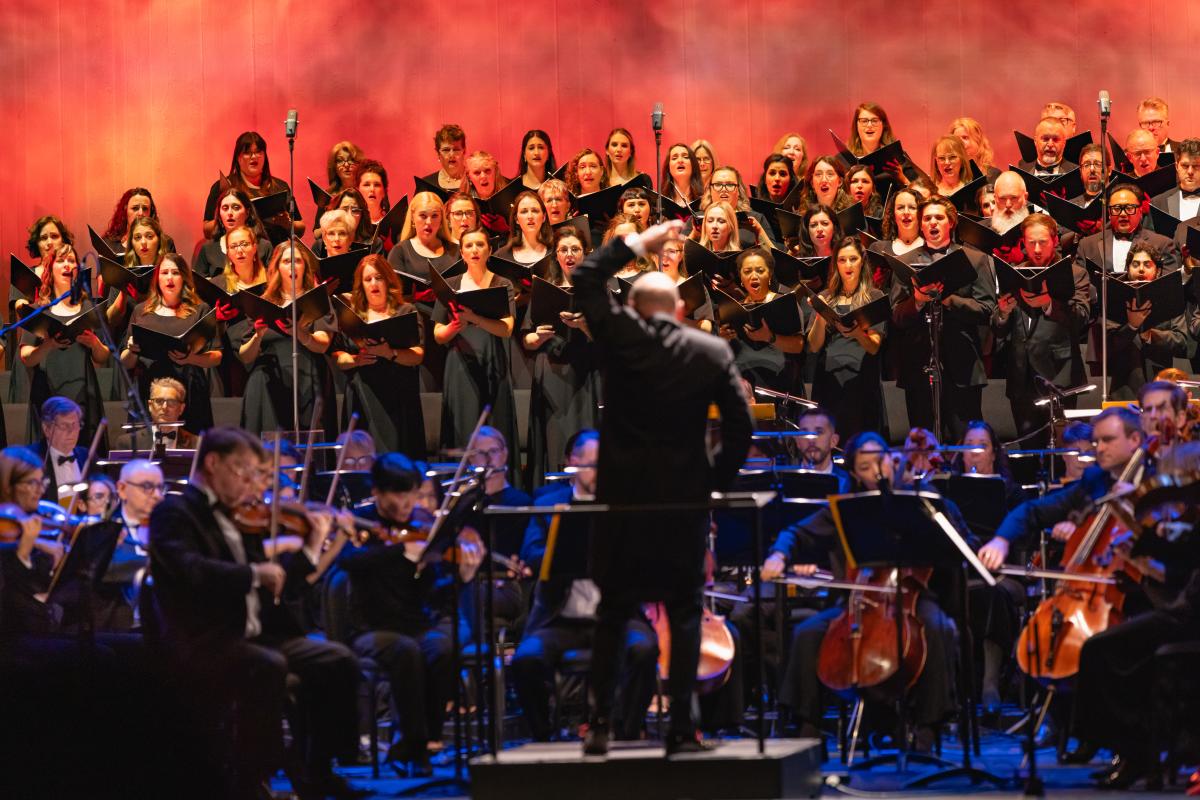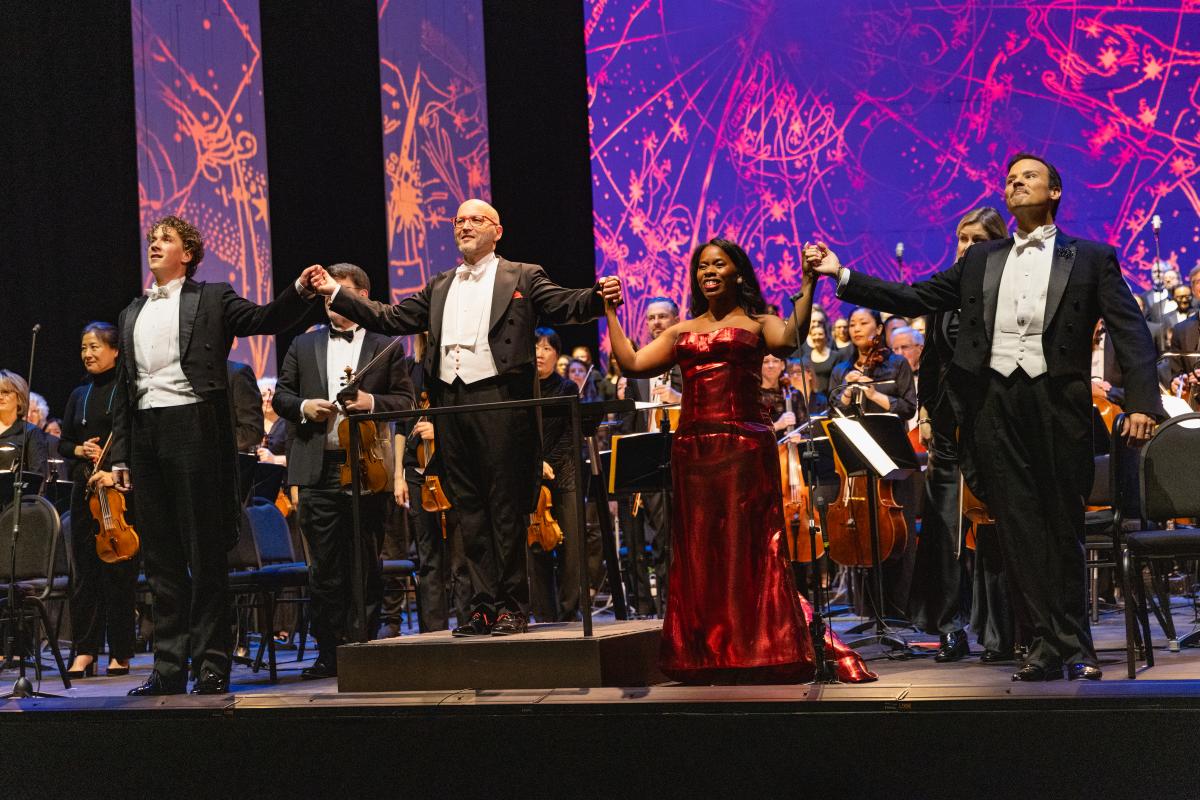
****HIGHLY RECOMMENDED**** For avid classical music lovers, "Carmina Burana" tends to hold a special place in their hearts. They flock to venues worldwide to get the opportunity to hear this rarely performed 20th-century cantata composed by Carl Orff every chance that they can get. For others, this somewhat obscure piece holds numerous surprises for its first-time listeners who are curious to discover what all of the fuss is about. Both groups were equally represented in droves at the recent, extremely brief run at Lyric Opera of Chicago, which had the enthusiastic opening night audience -- which was largely made up of members a good 20 to 30 years younger than your average patron attending a traditional opera at Lyric -- clamoring for more. 4 BIG SPOTLIGHTS

The Company of Carmina Burana including Uniting Voices Chicago. Photo by Kyle Flubacker
Inspired by 25 ancient poems, written in medieval German and Latin by various people during the 12th and 13th centuries, Orff's work was an instant success when it premiered in Frankfurt in 1936. Orff had grand designs for his "Carmina Burana" and always intended for it to be more than just a work for orchestra and chorus; Orff envisioned it as a springboard to collaborate with other artists who could add dance (primarily ballet) and other visual design elements to support the text. Sadly, the Joffrey Ballet was not involved in this production at Lyric Opera, so there are no dance sequences -- there wouldn't have been enough space on Lyric's massive stage regardless -- but Projection Designer Adam Larsen has created some striking visual imagery which certainly would have thrilled Orff and never feels obtrusive.

Enrique Mazzola and the Lyric Opera Orchestra and Chorus. Photo by Kyle Flubacker
Lyric's Chorus Director and Head of Music Michael Black rarely gets recognized for his remarkable work leading the Lyric Opera Chorus throughout the season. However, "Carmina Burana" drastically reverses that fault. It allows him to take center stage to showcase the talents of its 100+ members as they encapsulate all of the nuances which form the natural arc of the human condition. Black is quick to point out the tremendous benefit of having "Carmina Burana" performed by an opera company's chorus. Usually, when this work is performed, it is done by a symphony and their chorus. But a symphonic chorus is very different from an operatic chorus. Members of an operatic chorus are trained differently and they are conditioned to always create character vocally. Thus, hearing "Carmina Burana" at Lyric Opera of Chicago allowed for a much bolder sound during the thunderous opening passage and all of the human emotions at play here were larger and more fiercely dramatic.

Jasmine Habersham. Photo by Kyle Flubacker
While Orff's work may initially feel that it is thematically and stylistically disjointed, with Lyric's Music Director Enrique Mazzola at the podium you are guaranteed that this specially expanded orchestra is in good hands. It is always such a pleasure to get the opportunity to see Maestro Mazzola conduct, as he brings so much passion and obvious joy to every assignment. "Carmina Burana" has Mazzola on the stage itself, situated front and center, with the orchestra upstage of him and the full chorus (on risers) behind that. This allows the entire audience to see exactly how he works, lively and animated, and appreciate the rapport he has with his artists as he modulates tempos and controls the sound levels which emanate from specific sections of the orchestra. If you were attending an opera at Lyric, you would not get this perspective unless you were seated in the first several rows near the orchestra pit.

Ian Rucker. Photo by Kyle Flubacker
"Carmina Burana" is largely a choral work, but it does feature material for three soloists. Baritone Ian Rucker, a recent alum of the Ryan Opera Center, has the most stage time of the three. He is always impressive to hear, but an added benefit of his work here is his surprisingly strong and well-supported falsetto, which is required for several of the poems that he sings. Soprano Jasmine Habersham, resplendent in a shimmering red gown, displays great range and was supported by 32 members of Uniting Voices Chicago, a local children's chorus directed by Josephine Lee. Tenor David Portillo has a mere single solo, but it certainly is a memorable one. In an extremely bizarre personification of a dying swan, Portillo manages to illustrate how this poor bird has become trapped within Orff's grand scheme of Rota Fortunae (the wheel of fortune) and acknowledges his own fate.

David Portillo. Photo by Kyle Flubacker
Unfortunately, Lyric Opera had a very limited run of "Carmina Burana" that ran for only three performances last weekend. Let's hope that one of those performances was recorded so that more people will be able to enjoy it in the future.

Ian Rucker, Enrique Mazzola, Jasmine Habersham, and David Portillo. Photo by Kyle Flubacker
